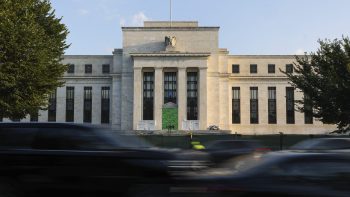The TARP auditor Neil Barofsky testified before Congress today and gave some numbers that feel like hard punch to the gut. He said so far, the US has committed $2.98 trillion to saving financial companies and Detroit automakers.
Of the $700 billion TARP money, he said only $109.5 billion remains. One reaction:
“This is a huge, unprecedented financial commitment…$2.9 trillion is just short of what the entire federal government spent in fiscal year 2008,” Senate Finance Chairman Max Baucus (D., Mont.) said. “It’s like having a second United States government budget dedicated solely to saving the financial system, and that is truly surreal.”
Barofsky also said he’s launched more than a dozen investigations into potential fraud with the TARP money. From the Financial Times:
Mr Barofsky, a former federal prosecutor in New York , said his role was to prevent the money being diverted illegally. He noted there was a “potential exposure of hundreds of billions of dollars in taxpayer money” if the bail-out efforts were to suffer from the average rate of fraud in federal programmes.
He said if his oversight efforts dissuaded institutions from taking Tarp money, “some might take this as a criticism. I do not”.
Me neither. If you thought the AIG bonus thing prompted rage, I can’t imagine what kind of fury would greet any evidence of fraud with these funds.
Barofsky’s considered the “TARP Cop” but there other people watching the money.
There’s a new project from the Pew Charitable Trusts called Subsidyscope. It’s following TARP and providing information on the Subsidyscope website. One feature allows you to type in the name of a financial company and find out how much TARP money has been invested in it.
The site is also keeping track of bank stock prices versus “strike” prices. That’s the price at which the Treasury has an option to buy the company’s stock. So, you can see how much money the taxpayers are losing at the moment, but eventually, you might see the minuses turn to pluses.
Here’s Subsidyscope’s raison d’etre:
In the past several months, the federal government has intervened in the nation’s economy in unprecedented ways. Those actions have raised many citizens’ awareness of the role of subsidies in the economy and heightened concerns about their size, not only in the financial sector, but in other sectors as well. Yet, despite growing public concerns, comprehensive and high-quality information about the true scale of government subsidies is still lacking. Moreover, in light of the scarcity of resources in today’s fiscally challenged environment, such a database could help policymakers and the public make more informed decisions about public policy.
Besides providing raw information, Subsidyscope will also analyze the data and look for trends. They say their approach to the analysis is “unbiased, objective and nonpartisan.” I wish they wouldn’t say that because it’s an impossible standard, but I’m thrilled this stuff is being tracked so carefully.
There’s a lot happening in the world. Through it all, Marketplace is here for you.
You rely on Marketplace to break down the world’s events and tell you how it affects you in a fact-based, approachable way. We rely on your financial support to keep making that possible.
Your donation today powers the independent journalism that you rely on. For just $5/month, you can help sustain Marketplace so we can keep reporting on the things that matter to you.


















